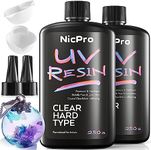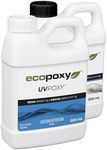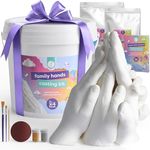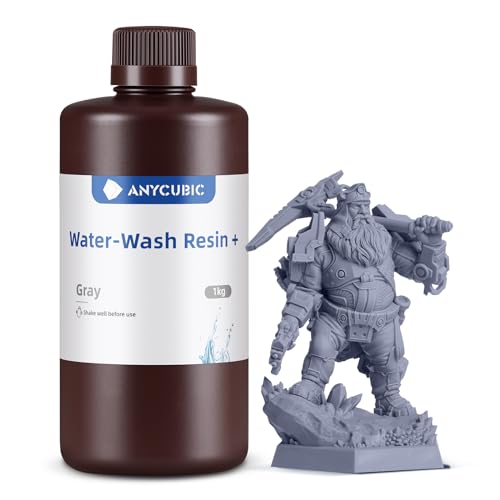Buying Guide for the Best Uv Resin
Choosing the right UV resin can make a big difference in the quality and durability of your finished projects, whether you're making jewelry, crafts, or small repairs. It's important to understand the key features of UV resin so you can select one that matches your needs and ensures your creations turn out just the way you want. By focusing on the main specifications, you can avoid common issues like yellowing, brittleness, or slow curing times.Curing TimeCuring time refers to how long it takes for the UV resin to harden completely when exposed to a UV light source. This is important because a faster curing time means you can finish your projects more quickly, but sometimes a slower cure can allow for more working time to adjust your design. Curing times can range from a few seconds to several minutes. If you need to work quickly or are making multiple items, a fast-curing resin is helpful. If you want more time to perfect your work before it sets, a slower-curing resin might be better.
ViscosityViscosity describes how thick or runny the resin is. High-viscosity resins are thicker and less likely to flow or drip, making them good for building up layers or working on vertical surfaces. Low-viscosity resins are more fluid and spread easily, which is great for coating surfaces or filling molds with fine details. Choose a viscosity that matches your project: thick for sculpting or doming, thin for coating or casting into detailed molds.
Clarity and Yellowing ResistanceClarity is how clear the cured resin appears, and yellowing resistance is how well it stays clear over time without turning yellow. This is especially important for jewelry or decorative items where appearance matters. Some resins are specially formulated to resist yellowing from sunlight or age. If your project needs to stay crystal clear, look for resins that advertise high clarity and strong yellowing resistance.
Hardness and FlexibilityHardness measures how tough and scratch-resistant the cured resin is, while flexibility refers to how much it can bend without breaking. Harder resins are better for items that need to be durable and keep their shape, like jewelry or keychains. More flexible resins are useful for projects that need to bend or flex, such as coatings on soft materials. Think about how your finished item will be used to decide if you need more hardness or flexibility.
Odor and SafetySome UV resins have a strong smell or release fumes during curing, which can be unpleasant or even harmful if used in a poorly ventilated area. Low-odor and non-toxic resins are safer and more comfortable to use, especially if you’re working indoors or for long periods. If you’re sensitive to smells or concerned about safety, look for resins labeled as low-odor or non-toxic.
ShrinkageShrinkage is how much the resin reduces in size as it cures. High shrinkage can cause warping or make your finished piece smaller than expected, which is a problem for precise projects. Low-shrinkage resins are better for detailed or fitted items. If accuracy and shape are important in your work, choose a resin with minimal shrinkage.















